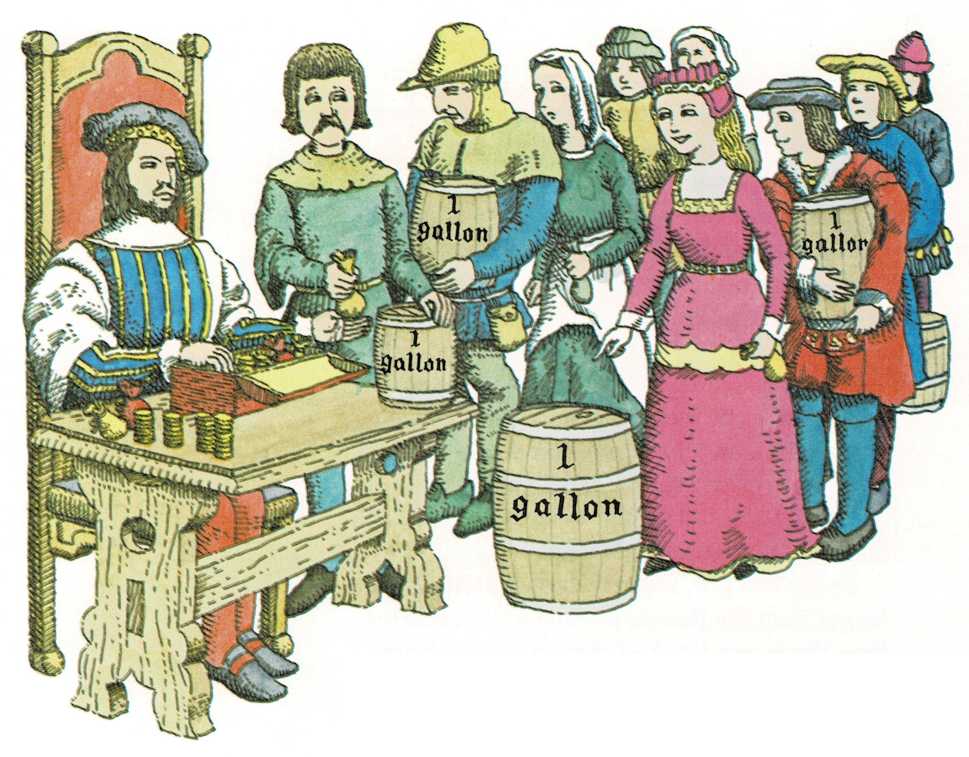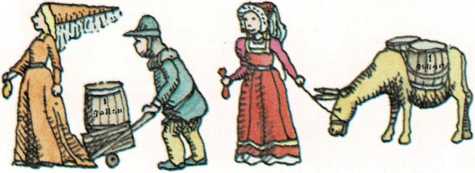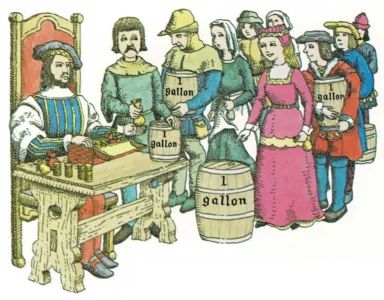Pints, quarts, and gallons
People who use the English, or customary, system of measurement buy milk
and other liquids in pints (pynts), quarts (kwawrts), and gallons
[(gal]{.smallcaps} uhns)—and they have a terrible time remembering
that there are two pints in a quart and four quarts, or eight pints, in
a gallon. Each of these units is a measure of capacity—the amount of
liquid that a bottle or other kind of container can hold.
Today, these liquid measures are based on cubic inches. There are 231
cubic inches in a gallon. In other words, if you had a cube one inch
square on the inside, you could pour 231 cubefuls of water into a gallon
container. But why are there 231 cubic inches in a gallon? Simply
because an English queen had to settle an argument about the tax on
wine!


Long ago in England, liquid measure was based on weight, and eight
pounds of wine made one gallon. About five hundred years ago, King Henry
VII changed the weight of the ounce, which changed the weight of the
pound. And, changing the weight of the pound changed the actual weight
of a gallon of wine.
The new gallon contained a weight of wheat equal to one hundred of the
king’s new ounces. The quart contained one-fourth of a gallon. And the
pint contained one-eighth of a gallon. The word quart comes from a
Latin word that means “a fourth.” And a quart is a quarter, or
one-fourth, of a gallon. The word gallon comes from an old word that
means “a bowl that holds liquid.” And pint may come from an old
Dutch word that means “plug.”
You might think that the new standards would settle matters. But they
didn’t. People went right on using a number of different “pounds.” So,
of course, there was more than one “gallon.” This meant that a merchant
who used a large gallon and one who used a small gallon paid the same
tax.
Finally, about 270 years ago, the merchants and tax collectors asked the
government to solve the problem. After some study, the queen, whose name
was Anne, ordered that the “gallon” used most often was to be the
standard gallon. It just so happened that this “gallon” contained
exactly 231 cubic inches. That’s why there are 231 cubic inches in
today’s gallon!

